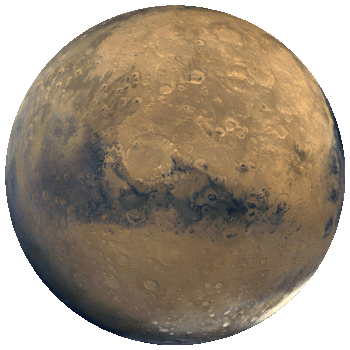
Mars 2020
July 17, 2013 When I was employed in corporate research, one of our tasks was to prepare long-range plans. These plans, usually looking towards a five year horizon, would be crafted with extreme care into highly polished reports and presentations. Unfortunately, all these were worthless within a year because management would sell many of the businesses our research was intended to support. It's no wonder that they make industrial-strength paper shredders capable of gobbling whole technical reports in one gulp. Ours were in constant use. As US president Dwight Eisenhower said, "Plans are worthless, but planning is everything." NASA is an organization that devotes significant resources to long-range planning. NASA's long-range plans are often very long range, with horizons decades away. Although NASA suffers from a similar management (i.e., congressional) nullification of its plans, many of its planned future missions do materialize. Presently, NASA is considering what it might do on Mars in 2020.[1-7] teleconference on July 9, 2013, to summarize a detailed report prepared by the Mars 2020 Science Definition Team (SDT). The report is an initial definition of a 2020 rover mission to Mars. Presenters at the teleconference were John Grunsfeld, NASA's associate administrator for science, Jim Green, director of NASA's Planetary Science Division, Jack Mustard, SDT chair and professor of geological sciences at Brown University, and Lindy Elkins-Tanton, SDT member and director of the Carnegie Institution for Science Department of Terrestrial Magnetism. The mission appears to accept the idea that life does not presently exist on Mars; and, even if it did, any robotic search for life would have a very low probability of success.[3] SDT chair, Jack Mustard, summarized the situation by saying that remote detection of life is "a darn hard measurement to make and a darn hard measurement to convince the skeptical science community, because scientists are naturally skeptical."[3] Still, Mars does appear to have had warm and wet conditions in the distant past that may have supported simple life forms, such as microbes, so a search for fossil evidence of such life is warranted.[1,3] The report of the Science Definition Team (SDT) is 154-pages in length, and it's the product of five months of work by nineteen scientists and engineers from universities and other research organizations.[1,4-5] The report outlines the capabilities of a rover with instruments for microscopic analysis to identify biosignatures; that is, features in the Mars lithosphere which might have formed biologically.[1] The rover has other functions to assist in a goal to send humans to Mars in the 2030s.[1] The planned 2020 Mars rover is essentially a copy of the Curiosity rover with a different scientific package. The 2020 mission has a $1.5 billion budget, so there will be a lot of technology reuse, such as the "skycrane" landing system used for Curiosity. NASA will have an open competition to define what instruments will be on the new rover.[1,3] Said John Grunsfeld, "The objectives determined by NASA with the input from this team will become the basis later this year for soliciting proposals to provide instruments to be part of the science payload on this exciting step in Mars exploration."[1] |
| An artist's conception of the NASA Mars 2020 rover. The similarities to the Curiosity Rover, which landed on Mars in 2012, are apparent.(NASA/JPL-Caltech image.) |
"I wouldn't rule out that perhaps human explorers will go and retrieve the cache, you know, in 20-plus years from now, as explorers set foot on Mars... That's an eventual goal: to put astrobiologists and planetary scientists on the surface of Mars."[5]exploration missions to Mars. Some questions it can answer are the hazards of Martian dust, and an analysis of carbon dioxide resources.[1,5] The Curiosity rover is measuring the radiation risks on Mars.[3] NASA has a present goal of putting astronauts on Mars sometime in the 2030s, and some of the Mars 2020 rover funding will come from the human space exploration budget.[3] Lindy Elkins-Tanton, a member of the SDT, said this at the NASA teleconference.
"And one of the very biggest questions for all of humankind is, 'are we alone?' and that is the question we're hoping to make really big advances with with this Mars 2020 mission."[5]
References:
- Dwayne Brown and Guy Webster, "Science Team Outlines Goals for NASA's 2020 Mars Rover," NASA Press Release No. 2013-217, July 9, 2013.
- Guy Webster and Dwayne Brown, "NASA Discusses Mars 2020 Plans in July 9 Teleconference," NASA Press Release No. 2013-214b, July 8, 2013.
- Jonathan Amos,"Next Mars rover to hunt ancient life," BBC News, July 10,2013.
- Barney Henderson, "Nasa's next Mars rover mission to advance hunt for past life," Telegraph (UK), July 10, 2013.
- Suzanne Presto, "Next Mars Rover Could Look for Signs of Past Life," Voice of America News, July 9, 2013.
- NASA/JPL-Caltech, "Proposed 2020 Mars Rover Science Goals," YouTube Video, July 10, 2013.
- Science Definition Team Documents, JPL Web Site.
- Guy Webster and Dwayne Brown, "NASA Discusses Mars 2020 Plans in July 9 Teleconference," NASA Press Release No. 2013-214b, July 8, 2013.

